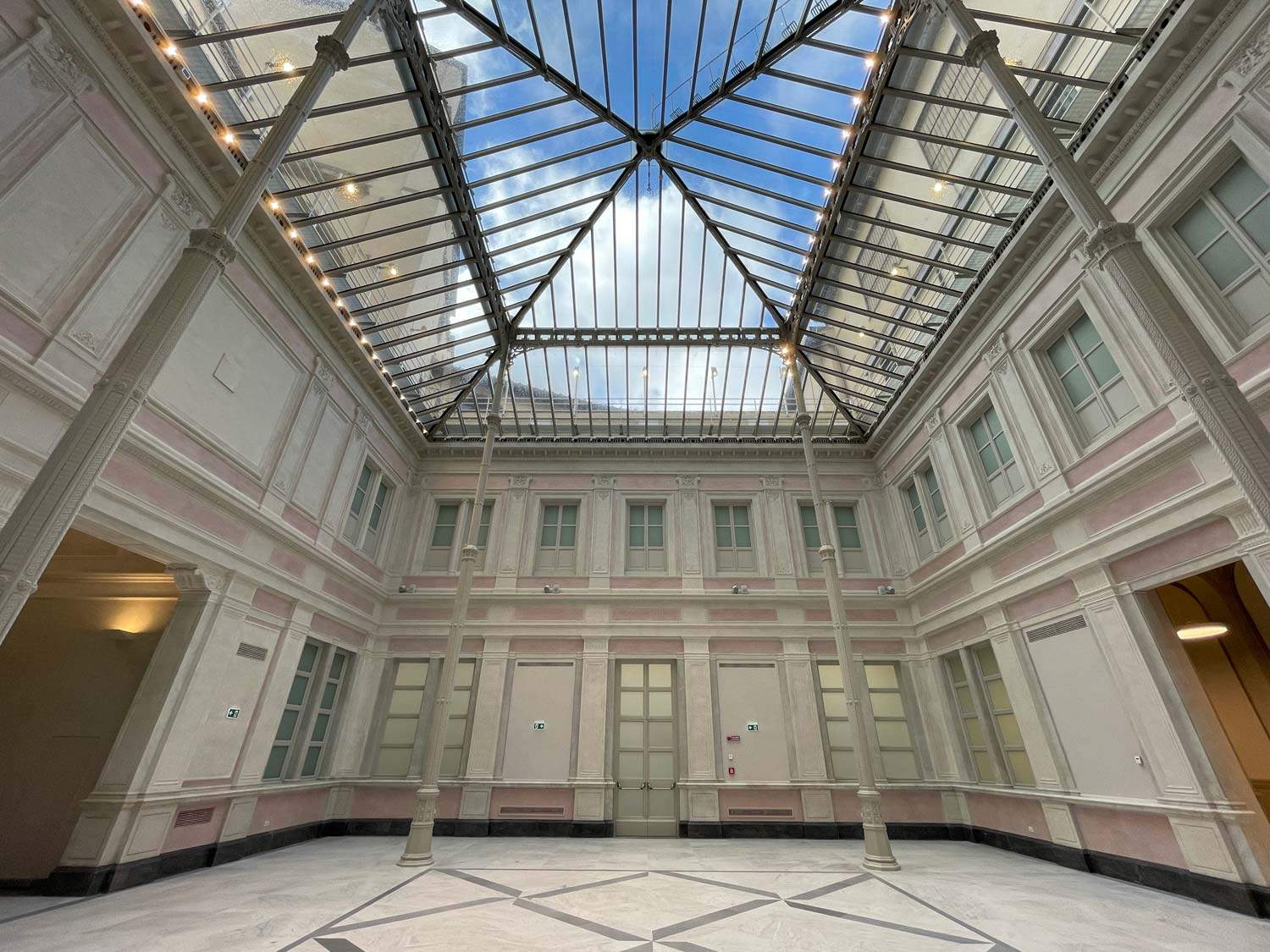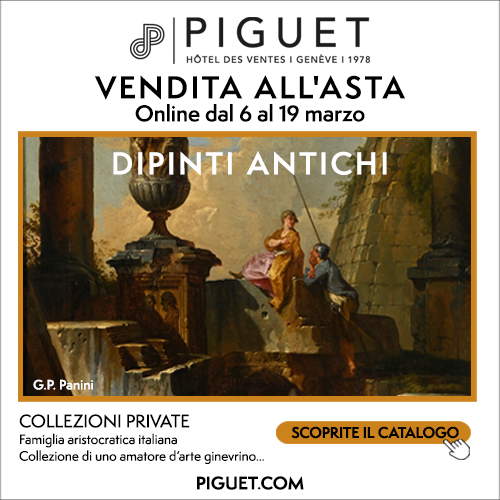The Uffizi will have a restaurant. It will be housed in the newly restored Royal Post Office hall
At the Uffizi , the restoration of the nineteenth-century rooms of the Royal Post Office, which will house a restaurant dedicated to Italian cuisine and a pastry shop, ends after a three-and-a-half-year intervention that began in 2018. A call for bids will soon be issued to entrust the new service, which is part of the Nuovi Uffizi project.
The work is being carried out by the team of architects and specialists from the Superintendency and the Galleries, and within a few months it will host, as mentioned, a restaurant with a menu entirely dedicated to Tuscan and Italian cuisine, practiced at the highest level: Tuscan dishes will form the heart of the proposal, but culinary specialties from all over the peninsula will also be offered, with accents on the different regions, and an area will be dedicated to pastries. The Royal Post Office, formerly and until 2016 occasionally used as an exhibition venue, will not lose this function. In fact, there will always be on display, on a rotating basis, a work selected from the museum’s deposits. The restaurant, which will have its own access overlooking the Uffizi forecourt, will remain open for both lunch and dinner: however, since it is an integral part of the Gallery, a day ticket orannual pass will be required to enter.
The restoration served to raise the salon of the Royal Post Office from the condition it was in, so much so that it was no longer adequate to be open to the public, both because of the absence of air conditioning and the unsafe condition of the skylight, which, in order to ward off possible water infiltration, had been covered with a protective sheet. The restoration, in addition to providing for the safety and functional adaptation of the space, has freed and repaired the skylight and brought back to light the elegant original colors: now it is possible to admire the subtle, luminous interpretation that architect Mariano Falcini (Campi Bisenzio, 1804 - Florence, 1885) had conceived for these rooms, destined for a prestigious and representative function for Florence Capital, that of Central Post Office.
In a part of the area that once housed the old Medici Mint, Falcini decided to close and redefine the open spaces of the Carriage Courtyard to create a vast hall covered by a light cast-iron skylight resting on slender, finely decorated columns. He characterized its interior by scanning it vertically with two rows of stucco-decorated pilasters and a rich cornice; partitions imagined to frame large windows, false openings and plastered mirrors. An orderly and symmetrical yet refined architectural solution, which today lives again in its elegant simplicity and will soon return to be enjoyed by all.
In the past, the hall housed the Central Post Offices, which functioned until 1917, built at the time of Florence Capital, in 1866, and located in the western sector of the Uffizi complex, in the area once occupied by the Florentine Mint, between Via Lambertesca and the Loggia dei Lanzi. Following the example of Paris’s Les Halles and Milan’s Galleria Vittorio Emanuele II, architect Falcini designed an avant-garde cast iron and crystal structure to cover the Post Office’s letter distribution room. After its closure, a number of concessions of use followed, until the restoration and carpentry workshops were set up next to the hall intended as a temporary exhibition area. In recent times these rooms have been used for storage.
The salon had undergone extraordinary maintenance in the second half of the 1980s, which, as far as the plaster and stucco surfaces were concerned, was limited to applying a new coloring that resumed the visible colors with more muted tones; since this recent intervention appeared to be well preserved, the final project did not plan to intervene on the salon except with maintenance of the marble flooring and punctual interventions on the cast iron structure. From the consultation of the post-flood images, in which different colorings from those visible from the 1987 site photographs were clearly evident, a careful campaign of essays of the pictorial stratigraphies of both the plasters and the cast-iron structures was promoted; thus the original colorings of the hall were rediscovered. In light of these acquisitions, as well as the results of the stratigraphic excavations, it was decided to include a comprehensive intervention on the restoration of the hall in the drafting of the executive project. The unearthing of the stucco elements, carried out with precision micro-sanding and scalpel finishing, revealed finely worked ornamentation; the elegant cast-iron columns, up to a height perceptible to the eye, were subjected to controlled chemical cleaning, supported by the use of scalpels and scrapers, to rediscover the metal surface; again, refined decorations appeared, some of them engraved. On the basis of the images from the 1987 construction site, thanks to the use of software for retouching and image reprocessing, it was then possible to reconstruct the valuable Venetian sown floor that existed before the recent polychrome marble solution was implemented: on this acquisition and on the basis of information from the other two documentary sources, the design of the new one, whose solution in Carrara marble and bardiglio marble harmonizes with the renewed airy and sober character that the Salone has acquired, was born.
“One of the nation’s major state museums will host a refreshment area where, those who wish, can complete their visit with the excellence of Italian cuisine,” says Culture Minister Gennaro Sangiuliano. “The combination of culture and good food is what has made Italy great in the world and it is natural that it should be reproposed at the Uffizi, in a context of great prestige that is thus returned to the community after years of closure.”
“A space that will be a surprise for visitors, particularly suited to accommodate the new functions with restaurant and bar, equipped with new facilities,” says Antonella Ranaldi, superintendent of architectural, landscape and environmental heritage for the provinces of Florence, Prato and Pistoia. “The completed restoration and recovery works of the Royal Post Office are a further milestone in the vast Nuovi Uffizi project carried out jointly by the Superintendency with the Uffizi Galleries. A virtuous example of collaboration between the MiC offices, with the result of making the Vasari complex increasingly varied and comfortable for the important flows of visitors but also for the Florentines who will be able to enjoy it by discovering unexpected spaces, now returned to the community.”
“It will not be yet another restaurant in the city, but a break space in the museum, to complement the visit,” argues Eike Schmidt, director of the Uffizi. “Also open in the evening, this diaphragm between the Uffizi and the outdoors will combine gastronomic pleasures with the refinement of the 19th-century architecture of the Royal Post Office. And just as a reminder of Italian unity, apart from the Tuscan choice, dishes from various regions of Italy will be offered, just as in the museum, according to Luigi Lanzi’s conception, there are masterpieces from the various regional schools of the Peninsula.”
 |
| The Uffizi will have a restaurant. It will be housed in the newly restored Royal Post Office hall |
Warning: the translation into English of the original Italian article was created using automatic tools. We undertake to review all articles, but we do not guarantee the total absence of inaccuracies in the translation due to the program. You can find the original by clicking on the ITA button. If you find any mistake,please contact us.





























